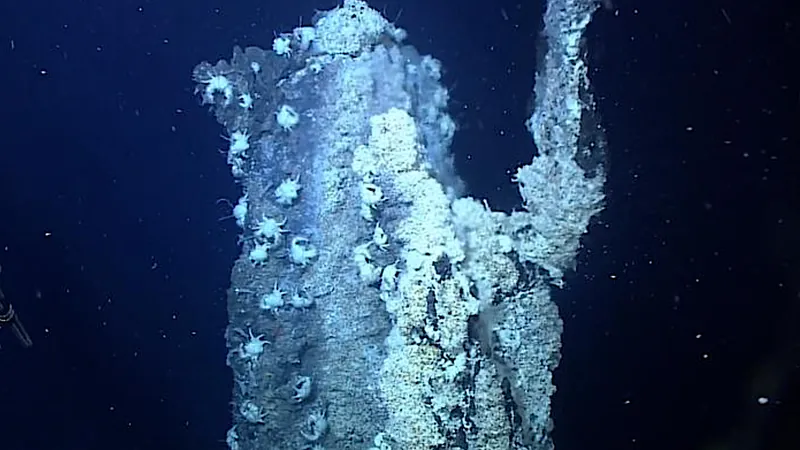
Inbreeding Crisis: Michigan's Only Rattlesnake Faces Threat of Extinction
2025-08-18
Author: Charlotte
Michigan’s Unique Rattlesnake under Siege
The Eastern Massasauga rattlesnake, Michigan's sole rattlesnake species, is facing a dire threat as human development fragments its habitat. A groundbreaking 15-year study reveals that increased inbreeding due to isolation is likely hurting these already endangered reptiles' survival rates.
Shocking Findings from a Long-Term Study
Researchers from Michigan State University (MSU) examined the family trees of over 1,000 Eastern Massasaugas as part of a U.S. Fish and Wildlife Service initiative. Their results, published in the Proceedings of the National Academy of Sciences, uncovered startling information: these inbred snakes had a 13% lower chance of producing healthy offspring and nearly a 12% decreased annual survival rate.
The Connectivity Crisis
“Restoring habitat connectivity is crucial,” warns MSU Professor Sarah Fitzpatrick. She emphasizes that while these populations might seem stable, the data suggests inbreeding problems could escalate, especially for smaller populations scattered throughout the Midwest.
Ecosystem Engineers at Risk
Despite being underappreciated, Eastern Massasaugas are vital to the Midwest's wetland ecosystems, controlling populations of critters like mice and rats that could otherwise wreak havoc on local homes. If they vanish, the entire ecosystem could be thrown into disarray, warns lead author Meaghan Clark.
Homebodies in a Hostile World
Eastern Massasaugas are creatures of habit, usually sticking close to their birthplace. But with more roads, farms, and housing developments encroaching on their wetlands, they are increasingly cooped up, leading them to mate with relatives rather than diversify their gene pool—a dangerous trend.
Understanding Inbreeding Depression
Inbreeding tends to negatively affect the fitness of offspring in wildlife. Researchers face challenges demonstrating this phenomenon in wild populations, especially with venomous snakes. However, Fitzpatrick's team has made significant progress through extensive fieldwork across Cass and Barry counties.
The Backbone of Conservation:** Long-term Tracking
Since the late 2000s, dedicated researchers have trekked through wetlands, capturing and studying these elusive creatures. By collecting DNA samples and tracking each snake with a microchip-like PIT tag, they've been able to map out familial relationships and monitor snake survival rates over time.
A Call to Action for Conservationists
Fitzpatrick envisions this study sparking conservation efforts aimed at helping Eastern Massasaugas find mates beyond their immediate families, particularly in declining populations. Simple interventions like habitat restoration or constructing wildlife underpasses can enhance connectivity and bolster the snake's gene pool.
A Silent Ally in Ecological Health
Though often misunderstood, the Eastern Massasauga rattlesnake serves as a crucial ally in maintaining the health of Michigan’s wetlands. Protecting their habitat not only ensures their survival but also preserves the ecological balance of the region for generations to come.









 Brasil (PT)
Brasil (PT)
 Canada (EN)
Canada (EN)
 Chile (ES)
Chile (ES)
 Česko (CS)
Česko (CS)
 대한민국 (KO)
대한민국 (KO)
 España (ES)
España (ES)
 France (FR)
France (FR)
 Hong Kong (EN)
Hong Kong (EN)
 Italia (IT)
Italia (IT)
 日本 (JA)
日本 (JA)
 Magyarország (HU)
Magyarország (HU)
 Norge (NO)
Norge (NO)
 Polska (PL)
Polska (PL)
 Schweiz (DE)
Schweiz (DE)
 Singapore (EN)
Singapore (EN)
 Sverige (SV)
Sverige (SV)
 Suomi (FI)
Suomi (FI)
 Türkiye (TR)
Türkiye (TR)
 الإمارات العربية المتحدة (AR)
الإمارات العربية المتحدة (AR)